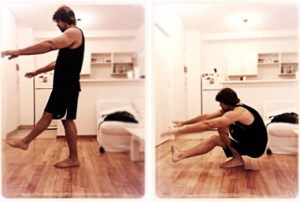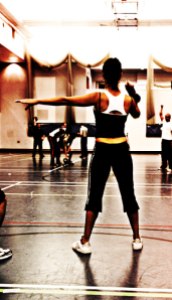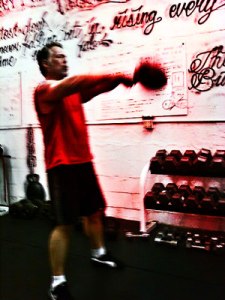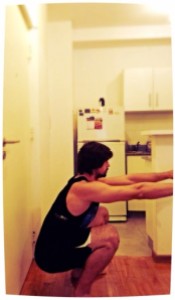Aesthetics and fitness go hand in hand. We might kid ourselves into thinking that we’re only looking for strength and endurance, but, unless you’re competing (and I’m willing to bet you’re not), the “look” is something that we’re all interested in. Be it to draw gazes or having the mirror tell us we’re doing ok, it’s what got most of us into the gym in the first place, and something that is at least always in the back of our heads.
On the other hand, while men want to be (at least) a little bit bigger and ripped, women would do well with a small bulk every once in a while (don’t worry, if most men cannot look like Arnold without strong chemical help, and neither do you). So, here’s my step by step into how I managed to gain, pretty cleanly, 9kg in 2 months.
Define your basal caloric needs for the week
I thought a daily count was necessary, but, having been at 81kg for a long while, eating under my calories during the week and compensating on the weekend, I believe that taking longer periods is better. Some day your social life will get in the way (and that’s ok), and you’ll be either drinking or eating more that you thought. Don’t beat yourself up, but take it into account on the rest of the week (ie: compensate in more than one day, not the next day. That doesn’t work either).
How to know your TWEE (total weekly energy expenditure, or how many calories you consume in a week)? Join myfitnesspal.com and have it run the numbers. Multiply by 7 afterwards. Use it as a guideline.
Eat your proteins
I don’t care where they come from. Eat them. Love them. Sleep with them. And, when in doubt, consume more. I’ve been eating some protein during the day and a killer at dinner (usually around 0.5kg of meat + 2 eggs + veggies + cream cheese + 1 avocado). You’ll need the protein, wherever it may come from.
You can always go with the Renegade Diet. I haven’t tried it myself but have heard good things from friends that have.
Supplement yourself
However you see fit. I’ve been consuming one can of tuna fish every weekday for the last 2 months and have been loving it. It also makes sure I hit my protein goal for the day, or stay close enough.
Focus on strength
I’m not a fan of hypertrophy work. So, I focused on strength. And you know what? It probably wouldn’t have changed a bit in the net result

Strength training. Works for lego, works for you – Photo by Pascal
(even more so, it was a bodyweight program). Just focus on doing the work, regardless of what it is. I’m pretty sure a more endurance focus will provide bulking results as well (you’ll just have to eat more). This is what I’m going to see what happens in September. Bigger volumes, less intensity.
Be clean 80% of the time
You don’t need to eat clean 100% of the time. God knows I wouldn’t take it. I was personally looking for a clean-ish bulk. The ish was the magic. I could drink and eat whatever I wanted, as long as I kept it to my weekends (1,5/7 days, around 70% really), and Sunday nights I’d usually eat less, since I was too stuffed from the rest of my weekend binge.
That’s it. There’s really nothing magical about it. It’s more about your diet than your workouts really. Create a healthy surplus and keep working out as you have and you’ll be gold.
If you don’t believe me, here’s the routine I followed:
Day 1
Front lever progression 5 x 10-15 seconds
Handstand progression 5 x 25-40 seconds
Weigthed pull-ups (@ 15kg) up to 25 reps
Headstand push-ups up to 25 reps
Pistols 5×5
Hanging leg raises 5×8
Day 2
Back lever progressions 5 x 10-15 seconds
Lsit 5 x 8 seconds
Weighted dips (very wide, don’t recommend) @10kgs up to 25 reps
Weighted tuck rows @5kg up to 25 reps
TGU 3×3
This 4 times a week in an ABAB fashion. That’s it. No extremes, little to no failures, and I’m happy as hell with the results.
Here’s the pic again.
















